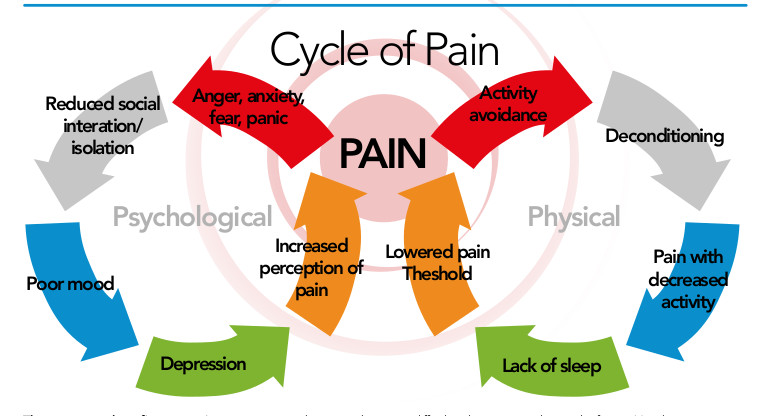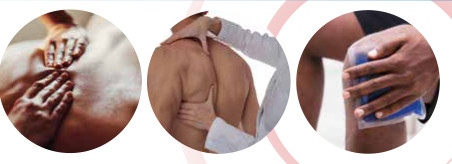If you suffer from chronic pain, you’ve probably at some point been told that you’re supposed to stay as active as possible. However the thought probably makes you cringe, especially when sometimes, just getting through the day at home or work is hard enough. This is where a physical therapist can help. They can give you a personalised strengthening and exercise plan, and help you learn how to manage your daily life and reduce pain through certain treatments.
Physical therapy treatments can come in many forms, and sometimes more than one treatment may be needed. Pain is as unique as the people who it affects and successful treatment is all about tailoring a solution to your individual situation, pain type and patterns.

Another very important component of your therapy is the relationship you have with your physical therapist. While this relationship may be an ‘on-again, off-again’ one that may span months or even years, it is essential you connect and develop belief and trust in him/her. This is crucial because an important part of your physical therapy will involve discussing and understanding your pain, talking during the treatment sessions, working on activity plans and pacing or goal setting with you. The role of your physical therapist in your pain management, should be one of partner and facilitator of the process.
Physical therapy includes both passive and active treatments. Passive treatments help to relax you and your body, and are called ‘passive’ because you don’t have to actively participate.
Your physical therapy programme may start with passive treatments, or they may be used during bad flare-ups, but the real goal is to get into active treatments. These are therapeutic exercises that strengthen your body and help you deal with the chronic pain, ultimately giving you more confidence and independence.
PHYSICAL THERAPY TREATMENTS
These treatments include:
Deep tissue massage: This technique targets spasms and chronic muscle tension that perhaps builds up through daily life stress. You could also have spasms or muscle tension because of strains or sprains. The therapist uses direct pressure and friction to try to release the tension in your soft tissues (ligaments, tendons, muscles).
Manual therapy: This is a hands-on treatment used to mobilise and manipulate joints that maybe stiff and contributing to your pain.
Hot and cold therapy: Your physical therapist will alternate between hot and cold therapies. By using heat, more blood flows to the target area, an increased blood flow brings more oxygen and nutrients to that area. Blood is also needed to remove waste by-products created by muscle spasms, and it also helps healing.Cold therapy, also called cryotherapy, slows circulation, helping to reduce inflammation, muscle spasms, and pain. You may have a cold pack placed upon the target area, or even be given an ice massage. These are treatments you can use at home. Get advice from your therapist about what to use and for how long, once home.
 Transcutaneous Nerve Stimulation (TENS): TENS machines stimulate your muscles through variable (but safe) intensities of electrical current. TENS helps reduce muscle spasms, and it may increase your body’s production of endorphins, your natural pain killers. If you find this helpful small machines for home use can be purchased. Your therapist can advise you on what to buy and give you lessons on how to use it safely.
Transcutaneous Nerve Stimulation (TENS): TENS machines stimulate your muscles through variable (but safe) intensities of electrical current. TENS helps reduce muscle spasms, and it may increase your body’s production of endorphins, your natural pain killers. If you find this helpful small machines for home use can be purchased. Your therapist can advise you on what to buy and give you lessons on how to use it safely.
Ultrasound: By increasing blood circulation, ultrasound helps reduce muscle spasms, cramping, swelling, stiffness, and pain. It does this by sending sound waves deep into your muscle tissues, creating a gentle heat that enhances circulation and healing.
Dry needling: This is a form of acupuncture in which the therapist inserts small needles into trigger points in the muscles to release spasm, promote healing and reduce pain
Strapping or bracing: This can be applied to support a specific joint or muscle or to help correct posture and alignment that may be contributing to your pain.

To find out more, do check out the Putney Clinic’s Osteopathy Services, Physiotherapy Services and Massage Services, contact us on 020 8789 3881 or by email at info@putneyclinic.co.uk to discuss your needs and find out how we can be of help.
